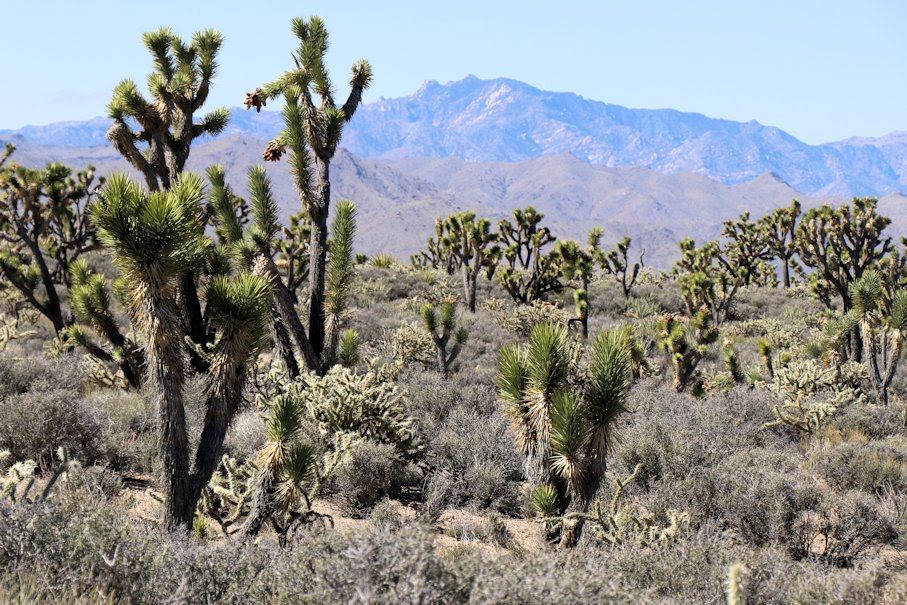Some places are better left alone

The proposed Avi Kwa Ame National Monument is a region that's very special to me. I've hiked, explored, and hunted just about every place it's possible to reach there. I have so many Google Earth waypoints for the region, it's a solid mass of pushpins when I open the program. I moved to Las Vegas as much for this desert environment as for my job, teaching biology at a local college.
Fragmentation of habitats is one of the main threats to ecosystem stability. The proposed monument would provide an unbroken chain of protection between various landscapes in the region, linking the Mojave National Preserve and two national monuments in California with two Wilderness Areas, an Area of Critical Environmental Concern, and a Conservation Easement in Nevada.
The currently unprotected area contains one of largest concentrations of Joshua trees on Earth, as well as a unique arid grassland community. There are at least a dozen springs scattered throughout the region. Some of these springs have standing or flowing water year-round, providing an essential resource for desert wildlife. This includes everything from desert tortoises, to bighorn sheep, to chukar, to mountain lions, to songbirds. Rocks near many of the springs are carved with petroglyphs, a testament to the historical importance of these springs for ancient people as well as wildlife.
The area is also important for people today. There are only three places where people in Southern Nevada can - within a relatively short time - travel to pinyon-juniper woodlands for camping, hiking, hunting, or merely to escape the heat of the desert sun. These locations are the Spring Mountains; the Desert National Wildlife Refuge (DNWR); and several areas within the proposed Avi Kwa Ame National Monument. (The Spring Mountains are heavily used. The DNWR is less crowded, but there's a long, rough drive before reaching the woodlands.)
The proposed Avi Kwa Ame National Monument is close to the Las Vegas Valley, and it's also easy to access, yet it is far less visited (and thus far less crowded) than the Spring Mountains. There are a variety of unofficial camping spots where people from the city can go on weekends to get away, to hike, to hunt, to explore. For residents of Southern Nevada, there are no other wooded locations as close by, as easy to get to, yet also as secluded, as those in this area.
The region also contains the crash site of Zulu Echo Six, a Navy P-3A Orion which went down in 1970, costing 10 men their lives. There's a monument outside the Searchlight Community Center, but there's no marker at the crash site itself, and no trail which leads to it. The only way to find the site is to stumble across it, as I did years ago. The site is a humbling and poignant experience. Debris spread across a wide area includes melted and twisted metal, as well as more recognizable and personal items such as a microphone, a seatbelt, and even the sole of a shoe. This is a location that deserves respect and protection.
The region encompassed by the proposed monument is ecologically, historically, and culturally important. Unfortunately, this region continues to come under threat from unsustainable and ecologically-damaging projects. In particular, more than one corporation has proposed to turn the area into a giant wind farm. It's vitally important to develop new sources of renewable energy, but every new development will have an impact on the environment. Because of this, we must consider new energy projects very carefully, to be sure that their benefits outweigh their detriments.
The region in question is really not particularly suited for wind-power development. Ironically, it continues to be targeted largely because there are so few people who understand its ecological, cultural, and historical significance. In other words, the region is targeted because there aren’t many people to make a fuss about it if it is damaged or destroyed. Threats to the integrity of this region have been defeated so far, but each new threat requires a substantial input of time, effort, and money from the few people who do understand the area's significance.
Without permanent protection, it may be only a matter of time before the effort required to keep on fighting diminishes to the point where the windmills, solar panels, or other types of development bully their way in. A region as ecologically diverse, and as sustainably useful, as this one should not be lost simply because it's an easy target for 'out of sight, out of mind' developers.
Dawn is originally from a small town in Maine, but is now a desert resident. She graduated from Dartmouth in 1989, starting her career as a marine mammal researcher before becoming a forest entomologist. Dawn taught a variety of biology subjects at College of the Atlantic in Bar Harbor Maine and Warren Wilson College in Asheville, North Carolina. She's been teaching at the College of Southern Nevada since 2001. She can be reached at [email protected].
